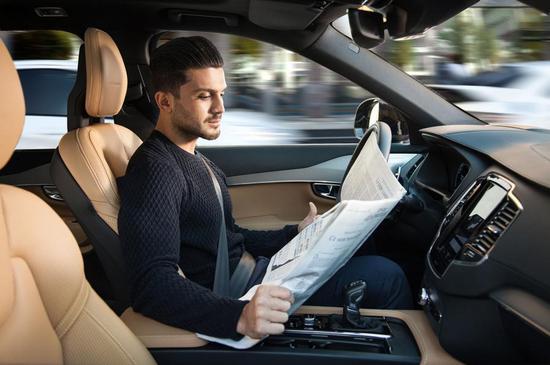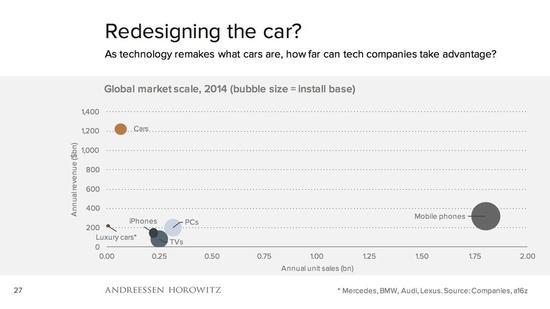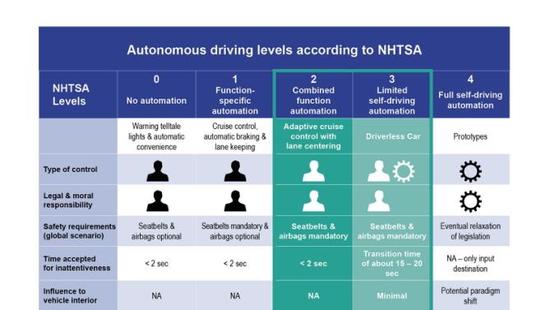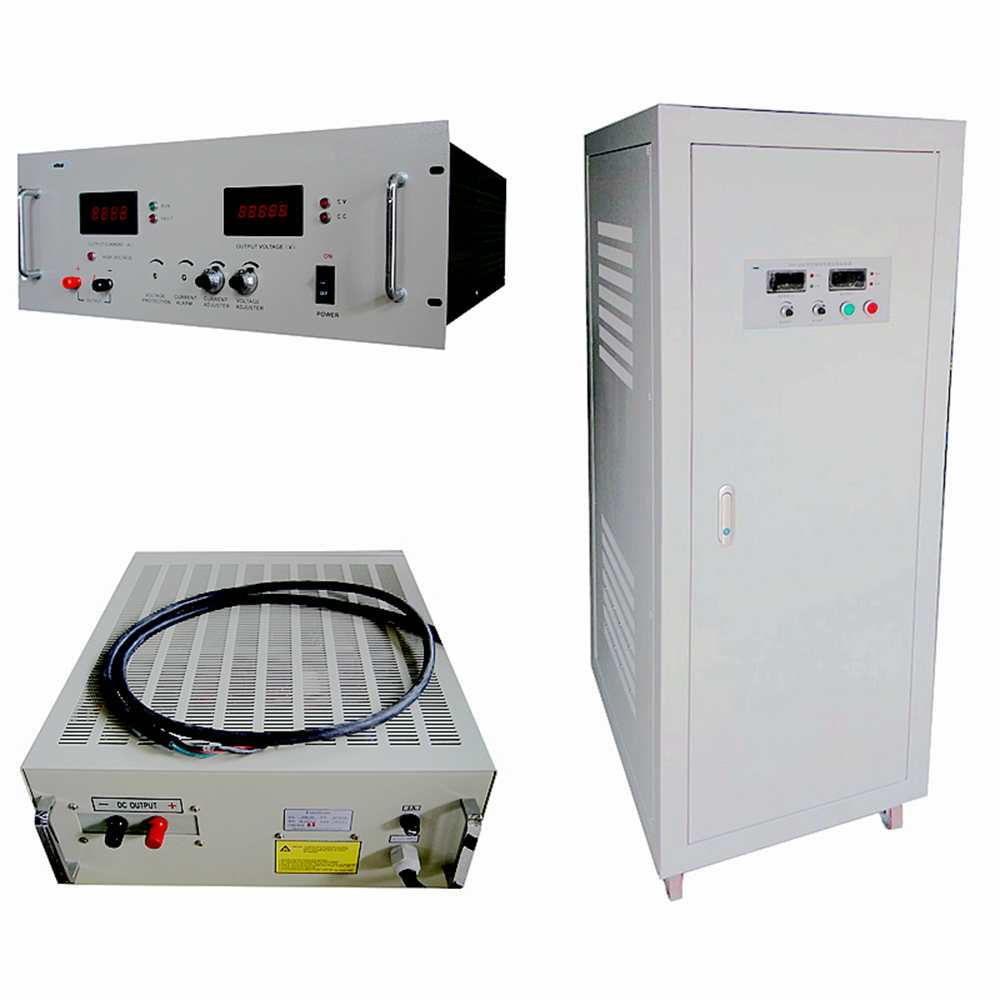Abstract: Relying on the national policy dividend, the right choice of technology route, and the forward-looking nature of the strategy, Chinese companies represented by Baidu have already seized the status of unmanned driving and are expected to become "dark" by artificial intelligence. "War" is an important variable.

Even though retirement has been announced, an article by senior science reporter John Markoff in the "New York Times" last week caused much discussion. The title "Chinese artificial intelligence catches up with the United States is not a dream" (title of the New York Times Chinese website) (Editor's note) pointed out the reality of the development of an industry: In the "infighting" of artificial intelligence in China and the United States, China may bend overtaking.
In this article, John Markoff criticized the ignorant Silicon Valley and the arrogant U.S. government. He also expressed his recognition of the outstanding progress made by the Chinese government and Chinese companies in the field of artificial intelligence. The article quoted Adam Segal, an expert on emerging technologies and national security issues at the Council on Foreign Relations, as saying that China is increasingly thinking about how to ensure that it is competitive in the next wave of technology. .
And if you say that the past ten years belonged to "Mobile (Phone)", especially in 2017 - the 10th anniversary of the release of the iPhone, a decade later, China and the United States spawned Apple, Xiaomi, Huawei and numerous Based on the application of smart phones, game giants, China Mobile Internet companies from weak to strong, from follow-up imitation to active innovation, embarked on a fast-track mobile Internet.
Nowadays, as the mobile Internet bonus gradually passes away, a new wave of innovation is emerging. Just as a 16z partner, Benedict Evans, provided a picture for the prediction of the post-smartphone era: the next decade or even decades is another "Mobile": "Auto Mobile":

This is an industry that is several times the market size of smart phones, but it is a traditional industry that continues to use technology, especially Internet and artificial intelligence, to “renovateâ€. This “idea†is unmanned. The United States, which is a strong country for traditional cars, and China, which is rising, are all making efforts in this area. A16z partner Frank Chen made a speech on the status quo and challenges of the unmanned industry, and pointed out in particular that the current unmanned competitive situation is actually the wrestle of the two major Chinese and Chinese companies (as shown in the following figure):

Among these giants, there are both traditional car companies such as GM, Ford, and emerging car manufacturers such as Tesla, but even more interesting are Internet companies represented by Baidu, Google, and Uber. However, unlike smart phones, the development of unmanned vehicles has great economic and social impact. Imagine that the early 20th century automobile industry changed the course of world urbanization in one fell swoop, while no one was ready to go. Driving will not only fundamentally change the behavior of driving, but will also reshape human life at the political, economic, and cultural levels.
Especially at the critical moment when the current artificial intelligence in China and the United States has entered the “dark battleâ€, the unmanned industry as an artificial intelligence collector has already become a key element in whether China can turn overtaking in the wave of artificial intelligence. The government policies of the United States and the competition between China and the United States in the Internet and auto industry environment are also the competition between Chinese companies represented by Baidu and Google, Tesla and other US companies.
Policy Ecology Dispute: Who Will Promote?
Standing on the nature of traffic, drones have changed the understanding of cars for the past century: When the role of the driver changes from human to machine, driving behavior changes from the human brain to machine decisions. The logic of the entire industry has undergone fundamental changes, not only in relation to car manufacturers, but also new challenges for transportation infrastructure—urban roads, highways, and even a variety of parking lots.
The government's decision can be significant. Judging from the current situation, the U.S. government lacks uniform regulatory measures. The 50 states have different policies in the areas of licensing, vehicle standards, regulation, and privacy protection. At the same time, there are many differences in legal responsibilities, data protection, and legislative penalties. It’s a nightmare for driverless car makers. In a policy environment without a uniform standard, a “legitimate†driverless car from New York State is likely to open in Texas or California and become an “illegal†car. .
Even in the fastest-growing California industry in the technology industry, its regulations on automobiles and driving are very strict. For example, drivers are required to sit in the front row, and for example, businesses are prohibited from removing manually operated steering wheels and brakes. Similar regulations will be greatly restricted. Automotive manufacturers for driverless innovation.
Looking back at China, with the July 2016 artificial intelligence being included as a new generation of information technology in the national "13th Five-Year National Innovation Plan," the plan places special emphasis on the need to focus on the development of a new type of "human-machinery" fusion technology And equipment. At the same time, on January 10, 2017, in the National Science and Technology Work Conference, Minister of Science and Technology Wan Gang disclosed that it is currently preparing a special plan for artificial intelligence, and is also studying and demonstrating the establishment of major artificial intelligence projects. This major project refers to the “Science and Technology Innovation-2030 Major Projectsâ€. According to the statements in the previous related documents, the projects that were included in them reflect “national strategic intentionsâ€.
On the other hand, as Wang Jin, Baidu’s senior vice president and general manager of the autonomous driving division, put it: “No one’s (driving) car follows the traffic rules more, and it has a greater improvement in clearing the traffic intersections. The traffic system’s The efficiency will increase because there will be communication between the car, the car, and the transportation system. The significant changes brought by unmanned driving to the city will also profoundly affect the smart transportation and smart city construction in major cities in China. This is also attractive. The important factors of the place. At present, governments including Anhui Wuhu, Shanghai International Automobile City and Wuzhen are cooperating with Baidu to build a demonstration area for driverless cars. In particular, during the 2016 World Internet Conference, Baidu’s 18 unmanned cars were on the road. Open urban road operations, and achieved very good test results.
The layout at the national level has been quietly started. Considering that drones have a huge influence as an industry and there is no national-level policy support, it is almost impossible to succeed. China’s government decision-making mechanism that concentrates its efforts on major issues helps to speed up the process. The rapid development of people's driving, and the dividends of policies, will continue to be released in the future.
Technical dispute: how to define the car?
There is a seemingly simple yet challenging question: What is the car of the future? There are probably two kinds of answers to this question. One answer is transportation, and the other is "four-wheeled computer." The difference in the answer also determines the difference in its technical route.
The former is the imagination of car companies, while the latter constitutes the plans of Internet companies such as Baidu and Google for the future automotive industry.
For automakers including Ford and General Motors, of course, they know how to build a car, but in essence, drone is a software or algorithm problem, and there is no clear evidence that these traditional car companies have software development beyond Google and Baidu. Competence, these car companies are currently catching up with the use of shared travel services, such as General Motors will cooperate with Lyft, the future launch of unmanned taxi service in the United States. However, if they are involved in the sharing of travel, their business model will certainly shift from product-driven to service-driven. This transformation is not easy for a century-old store like Ford.
Secondly, for cutting-edge auto companies such as Tesla, Tesla’s automatic driving software and algorithms have a lot of advantages. At the same time, it has a huge amount of data coming to Tesla’s data center every day. Improvements in next-generation automatic driving software. But Tesla’s dilemma is that the so-called “autopilot†advocated by Tesla at present is more precisely a high-level “cruising cruiseâ€.

According to the National Highway Traffic Safety Administration (NHTSA) standards for unmanned vehicles (above), Tesla’s automatic driving is basically between Level 2 and Level 3, even if it is an intermediate value, Level 2.5, essentially. It is also a mechanism to optimize the experience for drivers, that is, Tesla’s autopilot or driverless service targets are drivers, not passengers. In use, the driver still needs to maintain the alertness of the driver, keep an eye on the driving situation of the vehicle, and then take over the control of the vehicle at any time in an emergency. However, in the past 2016, many car owners who used Tesla's autopilot suffered a car accident, which also made the industry question the Tesla solution.
Third, Internet companies such as Baidu and Google are another way of thinking. For example, aiming for the highest level, that is, level 4 driverless, driverless at this level, serving passengers; and secondly, building a "cloud+car" computer system, which also means that the car will be used as a new generation of mobile. Computation terminal; Third, the use of sophisticated laser radar, through the laser scanning can get a 3D model of the vehicle's surroundings, through a powerful computing ability to sense the road ahead.
Taking Baidu's driverless vehicle as an example, a "car brain" is formed through core technologies such as environmental awareness, behavior prediction, planning and control, operating systems, smart interconnection, automotive hardware, human-computer interaction, high-precision positioning, and high-precision maps.
Baidu, an internet company, has natural advantages in handling large amounts of data and coping with high concurrency calculations. For example, a driverless car generates about 100 GB of data per hour, and if it is calculated by 10,000 vehicles, the daily data will exceed 10 PB. The processing pressure of these huge amounts of data and how to use this data make the car more " "Smart" is both a test of computing power and a test field for the development of deep learning algorithms. This field is undoubtedly the world of Baidu and Google.
Strategic Debate: How to Start Driverless
In fact, even Internet companies such as Baidu and Google have different choices for driverless landings. For example, Baidu chose to cooperate with car manufacturers to participate in the role of solution provider, and Google initially established the concept of self-renovation. In the past 2016, the changes in two development strategies are screaming.
Google’s driverless program really “had a big early start,†but in 2016, it “caught up late sets.†Throughout 2016, for Google’s driverless projects, it’s almost like “bad†to describe it. Frequent accidents, such as February, when a driverless car bypassed a sandbag in front of it, it collided with a bus coming from another lane after the lane change.
On the other hand, it's even worse that Google’s parent company, Alphabet, fluctuates in the entire development strategy of drones. From early years when they worked with car makers to later automakers, these vacillating directions also made Google The team lost a lot of talents, including Anthony Levandowski and Chris Urmson. The final decision is to formally abandon the plan to build a car, to cooperate with the car manufacturer as a technology or solution provider, and to separate the entire project from Google and to work independently in the name of Waymo.
Similar to Google, Apple’s unmanned driving strategy has also changed. According to the information Apple disclosed in a letter to the US National Highway Traffic Safety Administration at the end of 2016, Apple will cut into this field from the perspective of software and algorithms such as machine learning. , and gave up creating the so-called "Apple Car."
The strategic transformation of Google and Apple shows the correctness of Baidu's driverless strategy from another perspective. Since Baidu started the driverless project in December 2015, it has persisted in establishing a set of ecosystems based on its self-developed unmanned driving system through a combination of hardware and software and through cooperation with car manufacturers. The driverless drive test license issued by the DMV has been obtained and the open city road operation will be carried out at the World Internet Conference in December 2016.
Wang Jin, senior vice president of Baidu and general manager of the autonomous driving division, admitted frankly: “Droneless driving is actually a very long industrial chain and requires the promotion of the overall ecosystem, including depots, suppliers, insurance companies, banks, traffic control, and the Ministry of Industry and other government departments. Joint efforts to promote, plus the improvement of policies and regulations, can be truly operational." By opening up the basic capabilities of unmanned vehicles, more partners can be added to create a brand-new industrial ecology, which is of great significance to current unmanned driving.
Lidar, one of the most important equipments for unmanned vehicles, has severely constrained the cost of driverless cars due to its high price. In August 2015, Baidu invested in laser radar company Velodyne, which is expected to deepen through in-depth cooperation. The cost of laser radar, if it can reduce the cost to less than US$50, will have a disruptive impact on the whole industry chain of drones.
Write last
Today, drones also seem to have reached a critical point. After the early stage of market promotion and media hype, it can eventually return to a key issue: how to create an industrial chain based on driverless driving, and further influence urban planning through the industrial ecology. It is ultimately necessary to promote the progress of human civilization as early as the last century. This is by no means a problem that can be solved by one company or several companies, but it requires coordination at the national level and at the company level.
If we say that the automobile industry in the last century has shaped the United States and has become a powerful economic and technological country through the computer industry, then in this century, artificial intelligence has brought new opportunities to China. Among these, relying on the correct choice of national policy dividends and technological routes. As well as the forward-looking nature of the strategy, Chinese companies represented by Baidu have already seized an identity of unmanned driving and are expected to become an important variable in the “dark battle†of artificial intelligence between China and the United States through unmanned driving.
High Voltage Linear Power Supplies
HVLP series Linear High Voltage Power Supplies are High-voltage DC Power Supplies that achieve AC/DC conversion through power frequency transformers and transistor loop control. Compared with switching high voltage power supplies, linear high-voltage power supplies have higher stability, higher accuracy, and lower output ripple. And the most important, because of the use of the power frequency AC/DC conversion principle, the linear power supply has no high-frequency radiation interference, and it is especially suitable for use in places with restrictions on EMC and EMI.

The whole series linear power supply adopts industrial-grade metal chassis, pure copper AC/DC multi-insulation high-voltage transformer with varnish treatment, high-reliability multi-transistor filter loop, ensuring the power supplies can run for a long time at full load with high stability, high accuracy, and ultra-low ripple electronic characteristics, equipped with a complete protection circuit, which can better ensure the reliability of the linear power supply itself and the safety of the customer's load.
The output voltage and current can be adjusted by the 10-turn potentiometer with scale and lock on the front, equipped with 4 1/2-digit high-resolution LED meters for output value reading, and RS communication interface can also be added for remote control and monitoring of linear power supplies.
This series of linear high voltage power supplies are mainly used for gas discharge, high-voltage electronic tubes, and can also be applied for other electronic components burn-in test.
Because the output this power supply has HV, the output MUST be connected to the chassis for fixed grounding to ensure the personal safety of the user.
High-voltage Linear Power Supplies,Linear High Voltage Power Supplies, HV Linear Power Supplies, Linear HV Power Supplies, Linear HVPS
Yangzhou IdealTek Electronics Co., Ltd. , https://www.idealtekpower.com
